Related Research Articles

The Adal Sultanate, the Adal Empire, the ʿAdal, or the Bar Saʿad dīn, was a medieval Sunni Muslim Empire which was located in the Horn of Africa. It was founded by Sabr ad-Din III on the Harar plateau in Adal after the fall of the Sultanate of Ifat. The kingdom flourished c. 1415 to 1577. At its height, the polity under Sultan Badlay controlled the territory stretching from Cape Guardafui to the port city of Suakin in Sudan. The Adal Empire maintained a robust commercial and political relationship with the Ottoman Empire. Sultanate of Adal was alternatively known as the federation of Zeila.
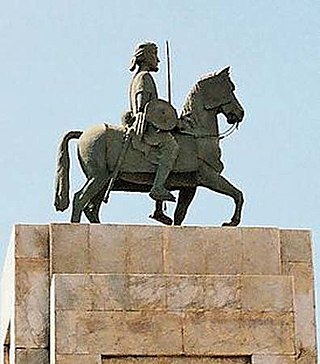
Ahmad ibn Ibrahim al-Ghazi was a military leader of the Adal Sultanate. Imam Ahmad, led the conquest of the Ethiopian Empire under the Sultanate of Adal during the Ethiopian-Adal War. He is often referred to as the "King of Zeila" in medieval texts.
Mahfuz was a Harari Garad, Emir of Harar and Governor of Zeila in the Adal Sultanate. Although he was originally only emir of a small region he would rise to become leader of Adal due to his popularity, wielding more power than the sultan of Adal.

The Sultanate of Ifat, known as Wafāt or Awfāt in Arabic texts, was a medieval Sunni Muslim state in the eastern regions of the Horn of Africa between the late 13th century and early 15th century. It was formed in present-day Ethiopia around eastern Shewa in Ifat. Led by the Walashma dynasty, the polity stretched from Zequalla to the port city of Zeila. The kingdom ruled over parts of what are now Ethiopia, Djibouti and Somaliland.
The Walashma dynasty was a medieval Muslim dynasty of the Horn of Africa founded in Ifat. Founded in the 13th century, it governed the Ifat and Adal Sultanates in what are present-day Somalia, Djibouti and eastern Ethiopia.
The Hadiya Sultanate also known as Adea or Hadia was a medieval kingdom located in southwestern Ethiopia, south of the Abbay River and west of Shewa. By 1850, Hadiya is placed north-west of lakes Zway and Langano but still between these areas. Hadiya was historically like the state of the Adal federation and a opponent of Abyssinia.

The Ethiopian Empire, also formerly known by the exonym Abyssinia, or just simply known as Ethiopia, was an empire that historically spanned the geographical area of present-day Ethiopia and Eritrea from the establishment of the Solomonic dynasty by Yekuno Amlak approximately in 1270 until the 1974 coup d'etat of Emperor Haile Selassie by the Derg. By 1896, the Empire incorporated other regions such as Hararghe, Gurage and Wolayita, and saw its largest expansion with the federation of Eritrea in 1952. Throughout much of its existence, it was surrounded by hostile forces in the African Horn; however, it managed to develop and preserve a kingdom based on its ancient form of Christianity.
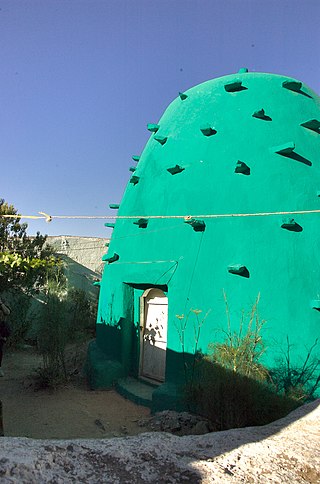
Nur ibn Mujahid ibn ‘Ali ibn ‘Abdullah al Dhuhi Suha was a Somali Emir of Harar who ruled the Adal Sultanate. He was known for marrying his uncle's widow, Bati del Wambara, and he also succeeded Imam Ahmad as leader of the Muslim forces fighting Christian Ethiopia.
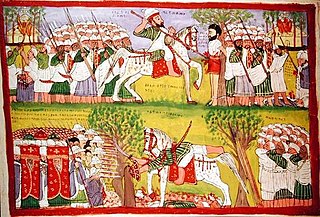
The Ethiopian–Adal War or Abyssinian-Adal War, also known in Arabic as the "Futuḥ al-Ḥabash", was a military conflict between the Christian Ethiopian Empire and the Muslim Adal Sultanate from 1529 to 1543. Christian Ethiopian troops consisted of the Amhara then afterwards their allies, the Tigrayans, and Agaw people, and at the closing of the war, supported by a few hundred Portuguese musketmen. While Adal forces were mainly Harla and Somali, as well as Afar, Argobba, Hadiya, as well as Turkish and Arab gunmen. Both sides at times would see the Maya mercenaries join their ranks.
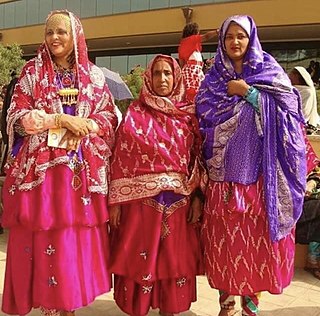
The Harari people are a Semitic-speaking ethnic group which inhabits the Horn of Africa. Members of this ethnic group traditionally reside in the walled city of Harar, simply called Gēy "the City" in Harari, situated in the Harari Region of eastern Ethiopia. They speak the Harari language, a member of the South Ethiopic grouping within the Semitic subfamily of the Afroasiatic languages.
Garad is a term used to refer to a clan leader or regional administrator. It was used primarily by Muslims in the Horn of Africa that were associated with Islamic states, most notably the Adal Sultanate.
The Harla, also known as Harala, Haralla are an ethnic group that once inhabited Somalia, Djibouti and Ethiopia. They spoke the now-extinct Harla language, which belonged to either the Cushitic or Semitic branches of the Afroasiatic family.
The Gurgura, Gorgorah or Gurgure is a northern Somali clan, a sub-division of the Dir clan family.

Fatagar was a historical province that separated Muslim and Christian dominions in the medieval Horn of Africa. In the eleventh century it was part of the Muslim states, then was invaded by the Christian kingdom led by Emperor Amda Seyon I, after which it would serve as central district in, and home of multiple rulers of, the Ethiopian Empire in the 15th century.
A Malassay was a member of the elite infantry units that formed the Adal Sultanate's household troops. According to Manfred Kropp, Malassay were the Harari armed forces.

Hubat, also known as Hobat, or Kubat was a historical Muslim state located in present-day eastern Ethiopia. Historically part of the Adal region alongside Gidaya and Hargaya states on the Harar plateau. Hubat is today within a district known as Adare Qadima which includes Garamuelta and its surroundings in Oromia region. The area is 30 km north west of Harar city at Hubeta, according to historian George Huntingford. Trimingham locates it as the region between Harar and Jaldessa. Archaeologist Timothy Insoll considers Harla town to be Hubat the capital of the now defunct Harla Kingdom.

Early history of Harar city is generally obscure, as many documents and records differ the exact date of the origin of the city. Most historical records state that Harar's history date back to 16th century, beginning with Adal Sultanate moving its capital from Dakkar to Harar during the reign of Sultan Abu Bakr ibn Muhammad. Other rudimentary oral tradition produced in 19th and 20th century stated that Harar history dated by in the 10th century or Abadir Umar ar-Rida founded the first Harar kingdom after migrating from Arabian Peninsula to spread Islam in 12th and 13th century.
Adal, known as Awdal or Aw Abdal was a historical Muslim region in the Horn of Africa. Located towards the Harar plateau east of Ifat. The Zeila state often denoted Adal and other Muslim dominions in medieval texts.
The Battle of Hubat was fought between the forces of Hubat principality led by Emir of Adal Ahmad ibn Ibrahim al-Ghazi, and the Abyssinian army, under Degelhan. This was the first encounter between Ahmed's forces with Abyssinians. Ahmed was known as Emir during this battle as he was yet to be given the title Imam.
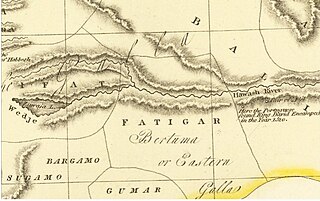
Ifat also known as Awfat or Wafat was a historical Muslim region in the Horn of Africa. It was located in modern eastern Shewa.
References
- ↑ Kropp, Manfred (1990). "MÄLÄSAY: SELBSTBEZEICHNUNG EINES HARARINER OFFIZIERSKORPS UND IHR GEBRAUCH IN ÄTHIOPISCHEN UND ARABISCHEN CHRONIKEN". Paideuma. Paideuma: Mitteilungen zur Kulturkunde. 36: 109. JSTOR 40732663.
- ↑ Hassen, Mohammed. Oromo of Ethiopia (PDF). University of London. p. 235.
- ↑ Budge, E.A (August 2014). A History of Ethiopia: Volume II (Routledge Revivals) Nubia and Abyssinia. Taylor & Francis. p. 361. ISBN 9781317648970.
- ↑ Hecht, Elisabeth-Dorothea (1982). "The City of Harar and the Traditional Harar House". Journal of Ethiopian Studies. Institute of Ethiopian Studies. 15: 57–78. JSTOR 41965897.